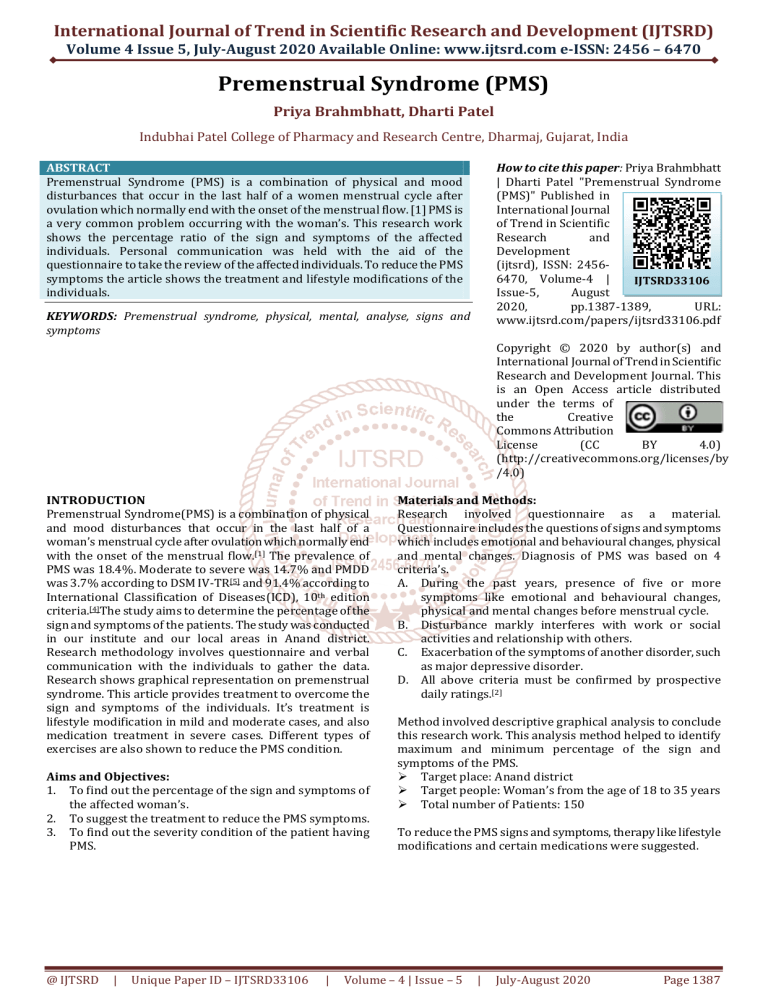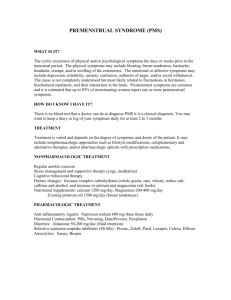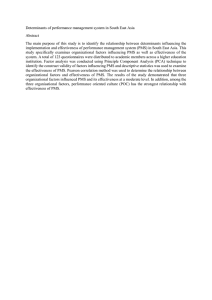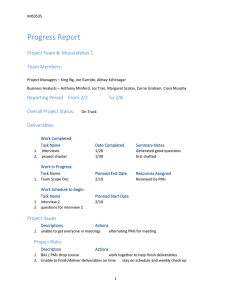
International Journal of Trend in Scientific Research and Development (IJTSRD) Volume 4 Issue 5, July-August 2020 Available Online: www.ijtsrd.com e-ISSN: 2456 – 6470 Premenstrual Syndrome (PMS) Priya Brahmbhatt, Dharti Patel Indubhai Patel College of Pharmacy and Research Centre, Dharmaj, Gujarat, India ABSTRACT Premenstrual Syndrome (PMS) is a combination of physical and mood disturbances that occur in the last half of a women menstrual cycle after ovulation which normally end with the onset of the menstrual flow. [1] PMS is a very common problem occurring with the woman’s. This research work shows the percentage ratio of the sign and symptoms of the affected individuals. Personal communication was held with the aid of the questionnaire to take the review of the affected individuals. To reduce the PMS symptoms the article shows the treatment and lifestyle modifications of the individuals. How to cite this paper: Priya Brahmbhatt | Dharti Patel "Premenstrual Syndrome (PMS)" Published in International Journal of Trend in Scientific Research and Development (ijtsrd), ISSN: 24566470, Volume-4 | IJTSRD33106 Issue-5, August 2020, pp.1387-1389, URL: www.ijtsrd.com/papers/ijtsrd33106.pdf KEYWORDS: Premenstrual syndrome, physical, mental, analyse, signs and symptoms Copyright © 2020 by author(s) and International Journal of Trend in Scientific Research and Development Journal. This is an Open Access article distributed under the terms of the Creative Commons Attribution License (CC BY 4.0) (http://creativecommons.org/licenses/by /4.0) INTRODUCTION Premenstrual Syndrome(PMS) is a combination of physical and mood disturbances that occur in the last half of a woman’s menstrual cycle after ovulation which normally end with the onset of the menstrual flow.[1] The prevalence of PMS was 18.4%. Moderate to severe was 14.7% and PMDD was 3.7% according to DSM IV-TR[5] and 91.4% according to International Classification of Diseases(ICD), 10th edition criteria.[4]The study aims to determine the percentage of the sign and symptoms of the patients. The study was conducted in our institute and our local areas in Anand district. Research methodology involves questionnaire and verbal communication with the individuals to gather the data. Research shows graphical representation on premenstrual syndrome. This article provides treatment to overcome the sign and symptoms of the individuals. It’s treatment is lifestyle modification in mild and moderate cases, and also medication treatment in severe cases. Different types of exercises are also shown to reduce the PMS condition. Aims and Objectives: 1. To find out the percentage of the sign and symptoms of the affected woman’s. 2. To suggest the treatment to reduce the PMS symptoms. 3. To find out the severity condition of the patient having PMS. @ IJTSRD | Unique Paper ID – IJTSRD33106 | Materials and Methods: Research involved questionnaire as a material. Questionnaire includes the questions of signs and symptoms which includes emotional and behavioural changes, physical and mental changes. Diagnosis of PMS was based on 4 criteria’s. A. During the past years, presence of five or more symptoms like emotional and behavioural changes, physical and mental changes before menstrual cycle. B. Disturbance markly interferes with work or social activities and relationship with others. C. Exacerbation of the symptoms of another disorder, such as major depressive disorder. D. All above criteria must be confirmed by prospective daily ratings.[2] Method involved descriptive graphical analysis to conclude this research work. This analysis method helped to identify maximum and minimum percentage of the sign and symptoms of the PMS. Target place: Anand district Target people: Woman’s from the age of 18 to 35 years Total number of Patients: 150 To reduce the PMS signs and symptoms, therapy like lifestyle modifications and certain medications were suggested. Volume – 4 | Issue – 5 | July-August 2020 Page 1387 International Journal of Trend in Scientific Research and Development (IJTSRD) @ www.ijtsrd.com eISSN: 2456-6470 Result and discussion: Using the questionnaire the result of the research are given in the following graphs 1,2,3,4 and5: N=150 Graph 1: Sign and symptoms Graph 2: Rate Sign and Symptoms Graph 3: Effect on daily activities @ IJTSRD | Unique Paper ID – IJTSRD33106 | Volume – 4 | Issue – 5 | July-August 2020 Page 1388 International Journal of Trend in Scientific Research and Development (IJTSRD) @ www.ijtsrd.com eISSN: 2456-6470 Graph 4: Emotional and Behavioural changes Graph 5: Physical changes Conclusion: In Anand district, research found that 77% woman’s were having PMS sign and symptoms. Out of 77% woman’s, 50%, 40% and 10% woman’s were having mild, moderate and severe sign and symptoms respectively. Research also showed that 71% woman’s were having effect on their daily activities. When research was done on a particular symptoms like emotional and behavioural changes it showed that there was 37% of mood swings, 32% of irritability, 16% of poor concentration and 15% of depressed mood. Likewise of physical changes there was 29% of joint or muscle pain and abdominal pain, 20% of acne flare-ups, 13% of fatigue and 9% of abdominal bloating. To reduce the sign and symptoms of PMS therapy to the affected individuals were suggested. Initial step was lifestyle adjustments that includes a good diet, exercise and good habits. Modify diet plan and consume fruits, vegetables, cereals, pulses, sweets, deserts, meat, eggs and dairy products. Also reduce stress and Incorporating exercise into regular routine life like do different types of exercises like butterfly, sphinx, child pose, saddle pose, dragonfly, legs up the wall, etc. was suggested. Medication therapy was also suggested which includes medicines like NSAIDS, Anti-depressants and diuretics. Alternative medicines were also suggested like Nutritional supplements, Phytoestrogenic supplements and Hormone regulating supplements.[3] @ IJTSRD | Unique Paper ID – IJTSRD33106 | Acknowledgment: We heartily thanks Dr. Akshay Shah who guided us throughout the research work and also guided us some key points to write this article. We highly appreciate the all long co-operation and genuine support given by Dr. Nehal Shah (Principal) and Mr. Chandrakant Bhai Patel (Trustee) of the Indubhai Patel College of Pharmacy and Research Centre, Dharmaj. References: [1] Shiel W. C.; “Medical Definition of Premenstrual Syndrome”.https://www.medicinenet.com/script/mai n/art.asp?articlekey=5031 [2] Bhatia SC, Bhatia SK; “Diagnosis and Treatment of Premenstrual Dysphoric Disorder”; American Family Physician; 2002, Oct 1. [3] “Mayo Foundation for Medical Education and Research”; 1998-2020.https://www.mayoclinic.org/diseasesconditions/premenstrual-syndrome/diagnosistreatment/drc-20376787 [4] World Health Organization, International Statistical classification of Disease and Related problems, 10th revision (ICD-10), Geneva: WHO;1992 [5] American Psychiatric Association, Diagnostic and Statistical Manual of Mental Disorders, 4th edition, Text Revision, Washington, DC: American Psychiatric Associations; 2000. Volume – 4 | Issue – 5 | July-August 2020 Page 1389




